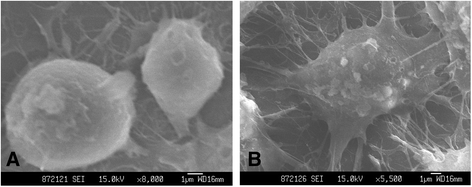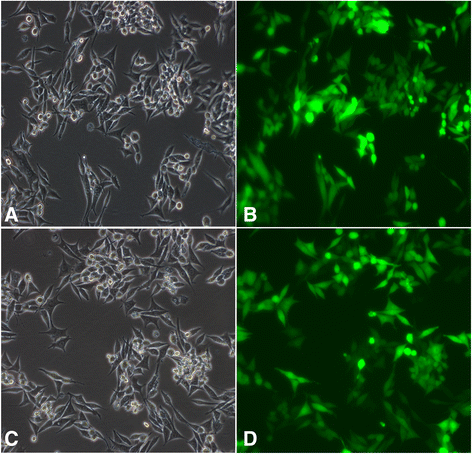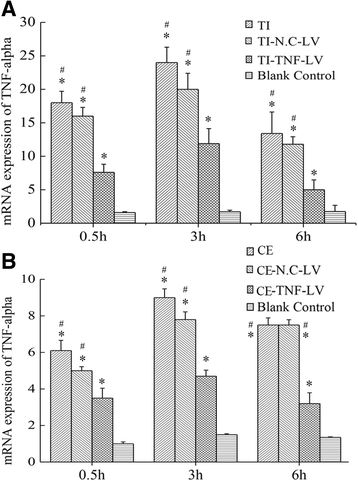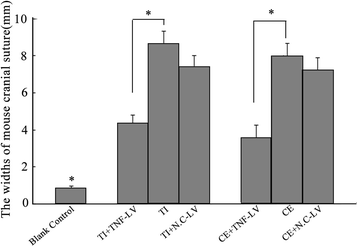Lentivirus-mediated short hairpin RNA interference targeting TNF-alpha in macrophages inhibits particle-induced inflammation and osteolysis in vitro and in vivo
- PMID: 27756280
- PMCID: PMC5069821
- DOI: 10.1186/s12891-016-1290-6
Lentivirus-mediated short hairpin RNA interference targeting TNF-alpha in macrophages inhibits particle-induced inflammation and osteolysis in vitro and in vivo
Abstract
Background: Aseptic loosening is a significant impediment to joint implant longevity. Prosthetic wear particles are postulated to play a central role in the onset and progression of periprosthetic osteolysis, leading to aseptic loosening of the prosthesis.
Methods: We investigated the inhibitory effects of a lentivirus-mediated short hairpin RNA that targets the TNF-alpha gene on the particle-induced inflammatory and osteolytic changes via macrophages both in vitro and in vivo. An siRNA sequence targeting the mouse TNF-alpha gene from four candidates, transcribed in vitro, was screened and identified. A lentivirus vector expressing short hairpin RNA (shRNA) was then constructed in order to facilitate efficient expression of TNF-alpha-siRNA. Lentivirus-mediated shRNA was transduced into cells of the mouse macrophage line RAW 264.7. Ceramic and titanium particles were introduced 24 h after lentivirus transduction to stimulate cells. TNF-alpha expression, represented by both mRNA and protein levels, was quantified with real-time PCR and ELISA at all time intervals. Lentivirus-mediated shRNA suspension was locally administered into the murine calvarial model, followed by local injection of particles. A multi-slice spiral CT scan was used to evaluate the osteolysis of the calvaria by detecting the width of the cranial sutures.
Results: Macrophages developed pseudopods when co-cultured with particles. Lentivirus-mediated shRNA was shown to effectively inhibit the expression of TNF-alpha at both the mRNA and protein levels in RAW 264.7. The multi-slice spiral CT scan showed that the lentivirus-mediated shRNA significantly suppressed osteolysis of mouse calvaria.
Conclusions: Our investigation highlighted the results that lentivirus-mediated shRNA targeting the TNF-alpha gene successfully inhibited particle-induced inflammatory and osteolytic changes both in vitro and in vivo. Therefore, lentivirus-mediated gene therapy may provide a novel therapeutic approach to aseptic joint loosening.
Keywords: Hip arthroplasty; Lentivirus; Periprosthetic osteolysis; RNA interference; Wear particle.
Figures






Similar articles
-
rna interference targeting p110β reduces tumor necrosis factor-alpha production in cellular response to wear particles in vitro and osteolysis in vivo.Inflammation. 2013 Oct;36(5):1041-54. doi: 10.1007/s10753-013-9636-9. Inflammation. 2013. PMID: 23584990
-
Adenovirus-mediated small interfering RNA targeting tumor necrosis factor-α inhibits titanium particle-induced osteoclastogenesis and bone resorption.Int J Mol Med. 2013 Aug;32(2):296-306. doi: 10.3892/ijmm.2013.1416. Epub 2013 Jun 11. Int J Mol Med. 2013. PMID: 23760678
-
Down-regulation of TNF-alpha by small interfering RNA inhibits particle-induced inflammation in vitro.Artif Organs. 2011 Jul;35(7):706-14. doi: 10.1111/j.1525-1594.2010.01175.x. Epub 2011 Apr 19. Artif Organs. 2011. PMID: 21501190
-
Wear and osteolysis in total joint replacements.Acta Orthop Scand Suppl. 1998 Feb;278:1-16. Acta Orthop Scand Suppl. 1998. PMID: 9524528 Review.
-
Chronic inflammation in biomaterial-induced periprosthetic osteolysis: NF-κB as a therapeutic target.Acta Biomater. 2014 Jan;10(1):1-10. doi: 10.1016/j.actbio.2013.09.034. Epub 2013 Oct 1. Acta Biomater. 2014. PMID: 24090989 Free PMC article. Review.
Cited by
-
Carboxymethyl chitosan reduces inflammation and promotes osteogenesis in a rabbit knee replacement model.BMC Musculoskelet Disord. 2020 Nov 24;21(1):775. doi: 10.1186/s12891-020-03803-3. BMC Musculoskelet Disord. 2020. PMID: 33234136 Free PMC article.
-
Immunobiology of periprosthetic inflammation and pain following ultra-high-molecular-weight-polyethylene wear debris in the lumbar spine.Expert Rev Clin Immunol. 2018 Aug;14(8):695-706. doi: 10.1080/1744666X.2018.1511428. Epub 2018 Aug 21. Expert Rev Clin Immunol. 2018. PMID: 30099915 Free PMC article. Review.
References
-
- Keener JD, Callaghan JJ, Goetz DD, Pederson DR, Sullivan PM, Johnston RC. Twenty-five-year results after Charnley total hip arthroplasty in patients less than fifty years old: a concise follow-up of a previous report. J Bone Joint Surg Am. 2003;85-A(6):1066–72. doi: 10.2106/00004623-200306000-00013. - DOI - PubMed
-
- Goodman SB. Allograft alternatives: bone substitutes and beyond. Orthopedics. 2010;33(9):661. - PubMed
Publication types
MeSH terms
Substances
LinkOut - more resources
Full Text Sources
Other Literature Sources

